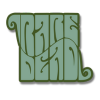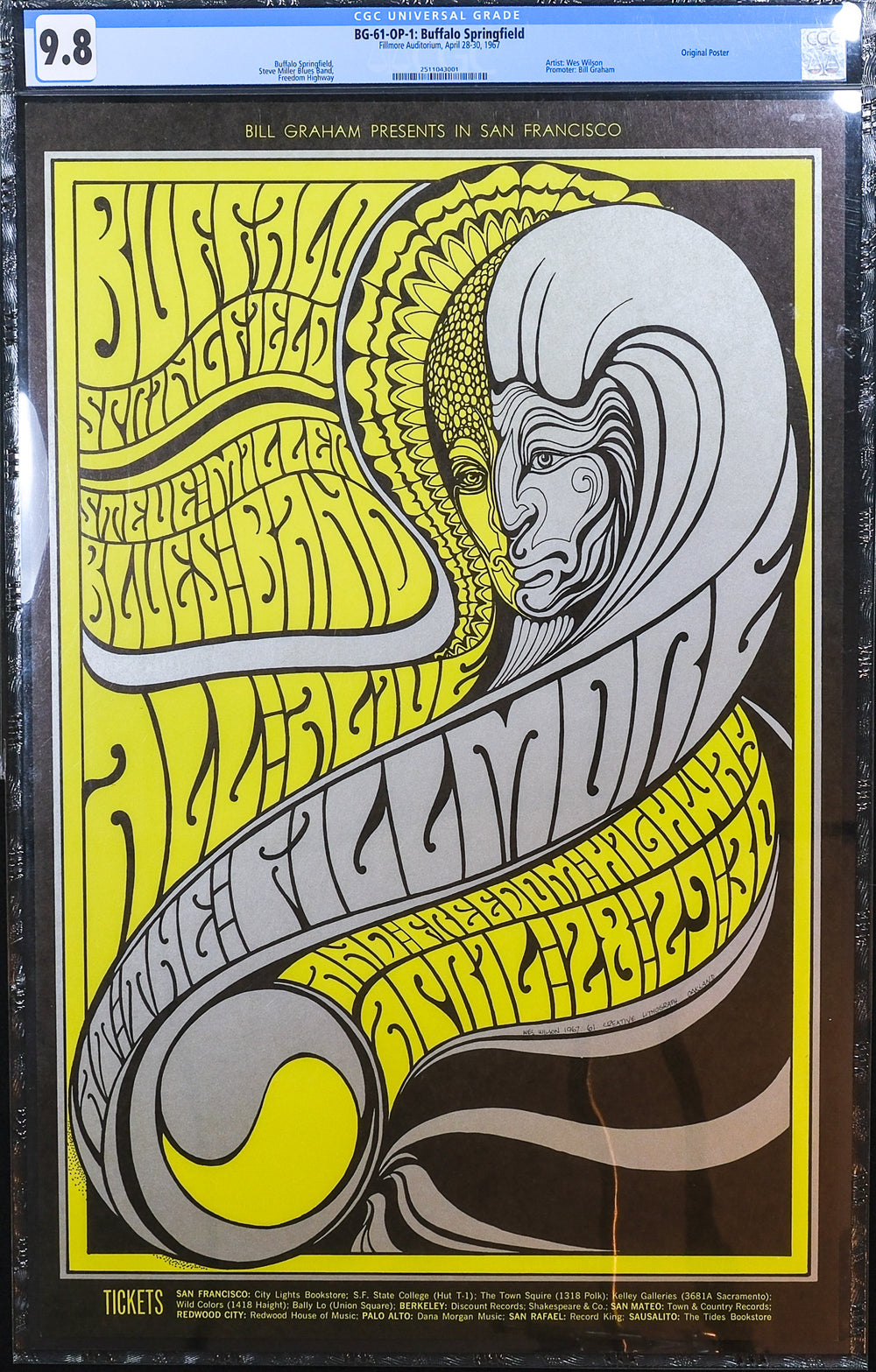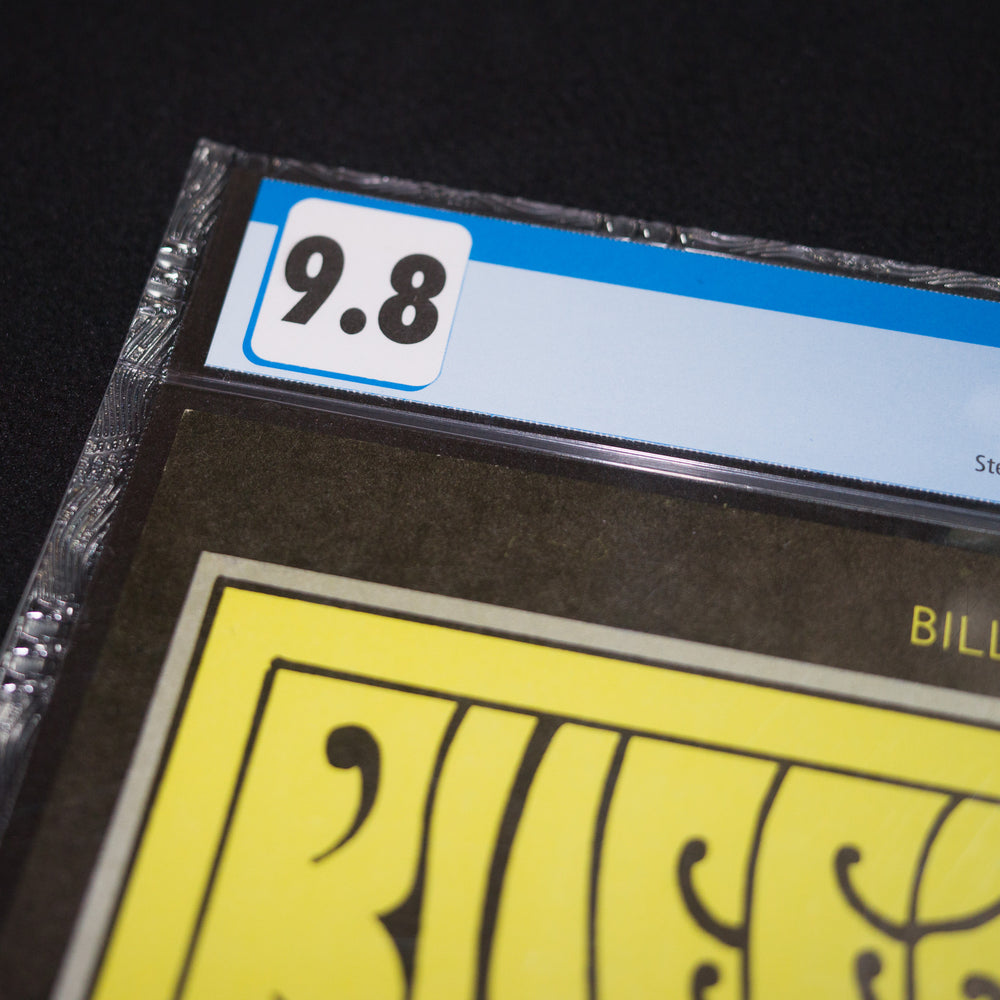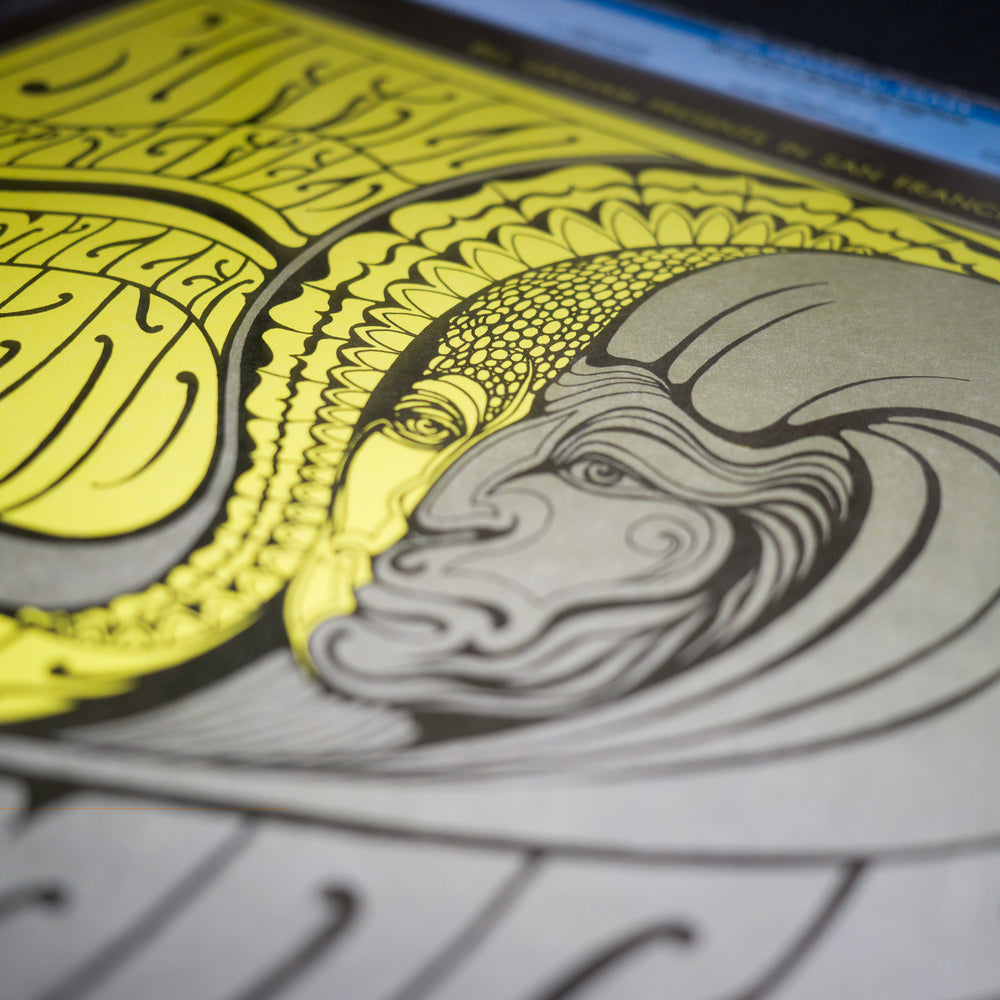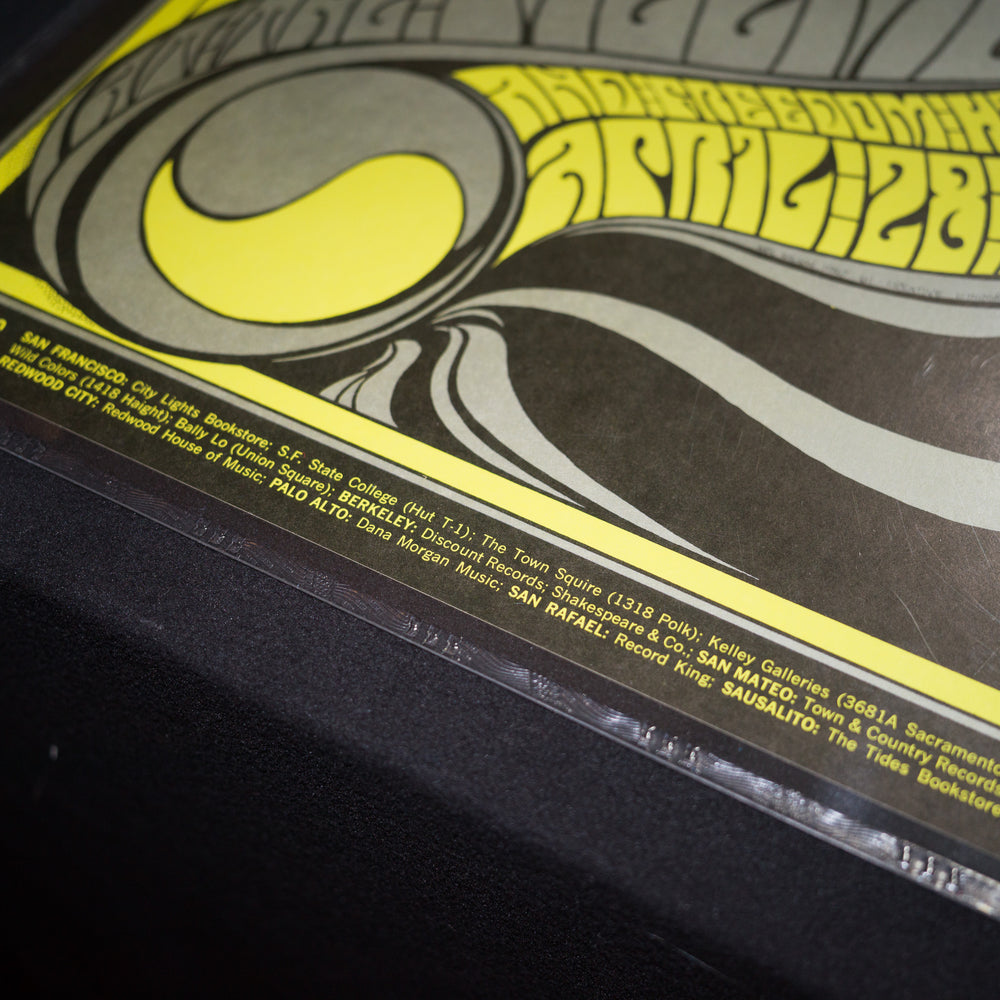Introduction
The Wes Wilson Buffalo Springfield 1967 Fillmore Poster is an iconic piece of rock history, embodying the spirit of the psychedelic era. Created by Wes Wilson, one of the leading designers of the psychedelic poster movement, this artwork was made for Buffalo Springfield's performance at the Fillmore Auditorium in San Francisco. Wilson's work is characterized by its fluid forms, striking color combinations, and distinctive lettering, all of which are beautifully showcased in this poster. The design captures the essence of the late 1960s counterculture, featuring psychedelic imagery that perfectly complements the innovative sound of Buffalo Springfield, a band that played a pivotal role in the development of folk-rock and country-rock. This poster is not just a promotional tool for a concert; it's a piece of art that represents a significant period in music history, making it a prized possession for collectors and fans of the era's music and art.
Key Features
- Artist: Wes Wilson
- Year: 1967
- Edition: BG-61 OP-1
- Numbering: NA
- Signature: NA
-
CGC Grade: 9.8
- Dimensions: Approximately 14" x 22"
- Material: Original Screen Print
- Venue: The Fillmore Auditorium
The Artist: Wes Wilson
Wilson wasn't your average graphic designer. He was a revolutionary force, taking the humble concert poster and transforming it into an electrifying canvas of counterculture rebellion and mind-bending visuals. Born in 1937 in Sacramento, California, Wilson's artistic journey started with philosophy and religion studies, but his true calling whispered in the vibrant streets of San Francisco in the mid-1960s.
He stumbled upon a copy of a poster by the Viennese Secessionist artist, Alfred Roller, and something clicked. Roller's bold lettering and intricate patterns resonated deeply with Wilson, who began experimenting with his own typographic alchemy. This newfound passion, coupled with the burgeoning psychedelic rock scene, became the perfect recipe for his artistic explosion.
Enter Bill Graham, the legendary rock promoter, who commissioned Wilson to design posters for his Fillmore Auditorium. This was where Wilson's genius truly took flight. He channeled the pulsating energy of bands like the Grateful Dead and Jefferson Airplane, translating their music into visual vortexes of swirling colors, distorted figures, and cryptic symbols.
Wilson's posters weren't just advertisements; they were invitations to a different dimension. They were windows into the kaleidoscopic world of the Haight-Ashbury scene, where free love, mind-expansion, and questioning authority were the anthems. His iconic imagery, like the melting clock face for Jefferson Airplane's "Surrealistic Pillow" or the skeletal hand grasping a flower for the Grateful Dead's "Skull & Roses," became instantly recognizable and forever etched in rock poster history.
But Wilson wasn't a one-trick pony. He also delved into album covers, creating masterpieces for bands like the Tubes and The Electric Prunes. His art wasn't confined to music either; he designed logos, flyers, and even clothing, leaving his psychedelic stamp on every medium he touched.
Sadly, Wilson passed away in 2020, leaving behind a legacy that continues to inspire generations of artists. His posters are not just nostalgic relics; they're vibrant testaments to a time when music and art collided to create a cultural revolution. Owning a Wes Wilson piece is like owning a piece of that revolution, a portal back to a time when anything seemed possible, and the only limit was your imagination.
So, next time you see a mind-bending concert poster, take a moment to appreciate the genius of Wes Wilson, the man who dared to paint the sounds of a generation and forever changed the way we see music.
The Band: Buffalo Springfield
Buffalo Springfield was an influential rock band formed in the mid-1960s, known for their pivotal role in the development of folk rock and country rock. The band's lineup included several musicians who would later become iconic figures in rock music: Stephen Stills, Neil Young, Richie Furay, Bruce Palmer, and Dewey Martin. They were known for their musical innovation, lyrical depth, and the fusion of various musical styles, which made them a significant force in the music scene of the late 1960s.
Formed in Los Angeles in 1966, Buffalo Springfield's music was a distinct blend of folk, rock, country, and psychedelic influences. Their sound was marked by the intricate guitar work of Stills and Young, and their songs often dealt with topical issues, personal reflection, and social commentary. Their most famous song, "For What It's Worth," written by Stills, became an anthem for the counterculture movement, capturing the spirit of change and unrest that characterized the era.
Despite their short existence, Buffalo Springfield had a significant impact on the music world. They released three albums between 1966 and 1968 - "Buffalo Springfield," "Buffalo Springfield Again," and "Last Time Around." Each album showcased the band's evolving sound and the individual talents of its members. The band's constant experimentation with various musical styles helped pave the way for future genres, particularly country rock.
The Venue: The Filmore Auditorium
The Fillmore Auditorium was a legendary venue that played a pivotal role in shaping the vibrant counterculture movement of the 1960s. Located in San Francisco's Haight-Ashbury district, the Fillmore became a beacon for the city's burgeoning psychedelic rock scene, hosting countless iconic performances by some of the most influential bands of the era.
Established in 1965 by legendary rock promoter Bill Graham, the Fillmore was a former movie theater transformed into a pulsating hub of musical energy. Its intimate atmosphere, with a capacity of just over 2,500, created an electrifying connection between the performers and the audience, fostering a sense of community and shared experience that resonated deeply with the counterculture ethos.
The Fillmore's roster of performers was a who's who of 1960s rock legends. From the psychedelic pioneers of Jefferson Airplane and the Grateful Dead to the blues maestros of Muddy Waters and Howlin' Wolf, the Fillmore stage hosted a diverse array of talent that reflected the era's eclectic and rebellious spirit.
The Fillmore's impact extended beyond its musical offerings. The venue became a cultural epicenter, hosting poetry readings, political rallies, and other events that fueled the social and political movements of the time. It was a place where activism and art converged, where music and free expression reigned supreme.
